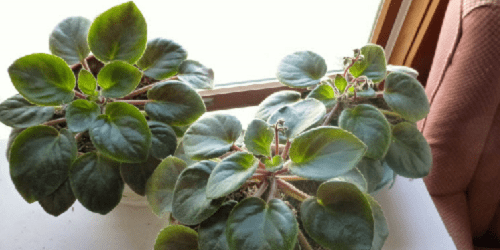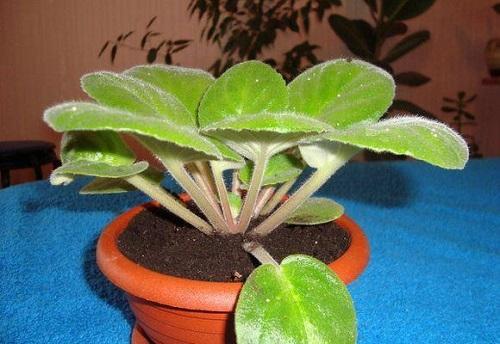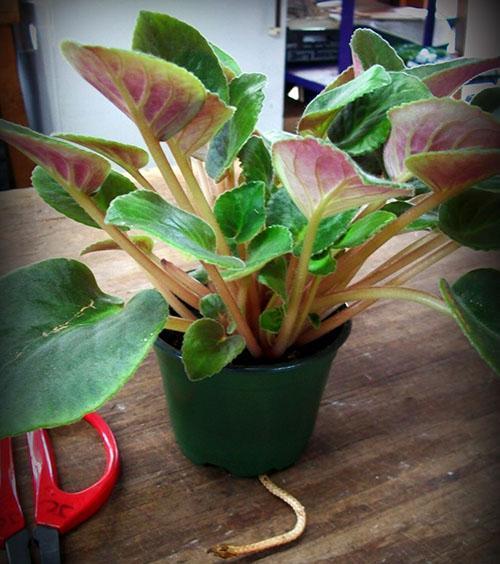How to make a violet bloom?
Perhaps the main advantage of violets is their lush blooming cap. However, very often the plant grows healthy fleshy leaves, but flatly refuses to tie peduncles. And then the question arises before the growers: how to make the violet bloom?

Before taking decisive action, it is worth finding out the reasons why violets do not have a flowering period. The most common of them include:
- improperly selected pot;
- unsuitable soil;
- excess nitrogen fertilizers;
- non-observance of the growing conditions for violets: lack of lighting, too high a temperature or a low level of humidity.
Incorrectly selected pot

Quite often, wanting to get a large bush, the violet is planted in a large pot. In no case should this be done, since the flower belongs to plants that bloom only after the pot is completely filled with roots. In a large container, the violet will throw all its strength on the active formation of the root system and deciduous mass. In this case, flowering will not come soon: the larger the pot, the more you will have to wait for it.
To speed up the process of setting flower stalks, the bush should be transplanted into a smaller pot.
Unsuitable soil or excess nitrogen fertilizer

Regular garden soil is not very suitable for growing violets. It is better to purchase a special substrate at a flower shop.
Not conducive to flowering violets and oily soil.
When transplanting a violet into loose and nutritious soil, experienced flower growers recommend picking off the lower leaves in two passes. The first time - immediately after the transplant, and again - a month later. Thus, by subjecting the plant to double stress (replanting and removing leaves), it is possible to provoke the onset of flowering.
After two weeks after transplanting, the violet should be fed with phosphorus fertilizers of low concentration. Watering is desirable through a wick.
To form a beautiful bush with a large amount of deciduous mass, periodic feeding of violets with nitrogen fertilizers is necessary. But if you do this too often, the plant will "forget" about flowering.
Failure to comply with the conditions for growing violets

Violets love well-lit windowsills without direct sunlight. In a dark far corner, the bush will not only not bloom, but may die altogether. An ideal place for violets is the darkened southern windowsill. When growing flowers on the north side using additional lighting, periodically wipe the lamps.
High air humidity has a positive effect on the flowering of violets. If the indoor air is dry, humidify it regularly. The best solution would be to purchase a humidifier, but you can also put a glass of water next to it.
Do not forget that violets need not too high room temperature for flowering. The most suitable values on the thermometer are a maximum of 16 degrees Celsius.
If the pot was constantly in a hot room, it is not recommended to abruptly transfer it to a cooler place. The temperature should be lowered gradually.